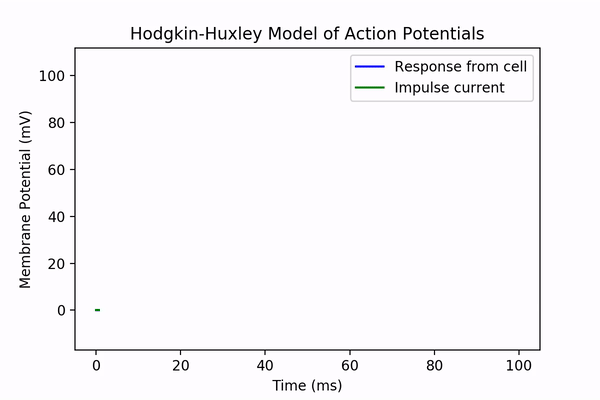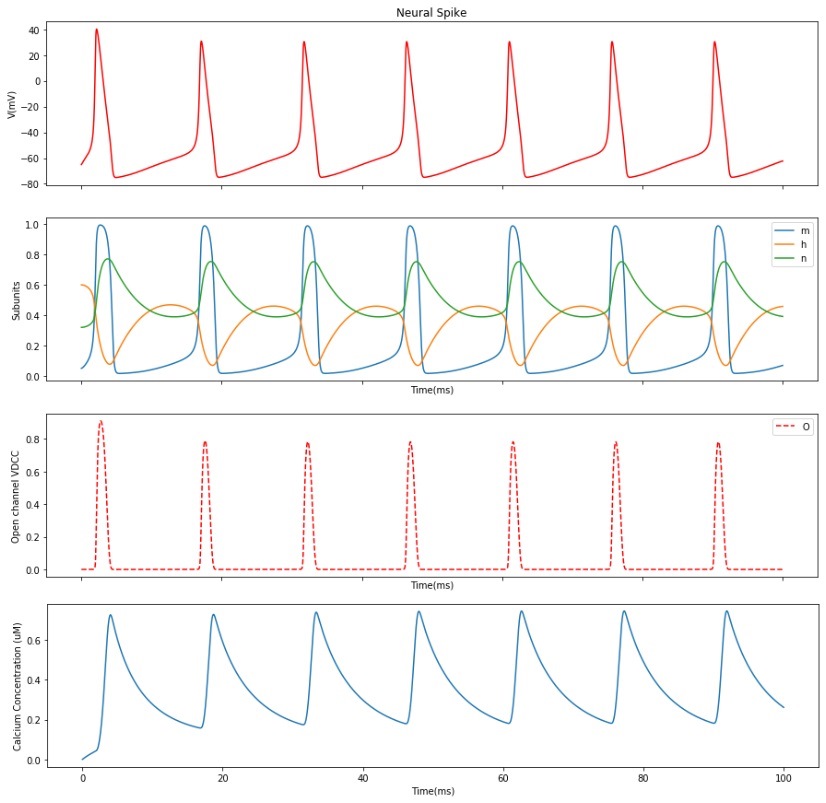Associate Professor
Indian Institute of Science Education and Research (IISER), Pune
Working Period: May 2019 - June 2020
Indian Institute of Science Education and Research (IISER), Pune
Working Period: May 2019 - June 2020
I joined Dr. Nadkarni's lab in May 2019 as a Master's dissertation student to complete my Master's project in the field of Computational Neuroscience. My project mainly focused on modeling the CA3-CA1 hippocampal synapse to explore how the changes in the number of sodium and potassium channels affect the neural signaling in healthy and diseased conditions of Alzheimer's.
I employed a computational approach to first model the basic Hodgkin-Huxley model to characterize the neural signaling and then integrate the other important factors such as Voltage-Dependent Calcium Channels (VDCCs), Calcium Pumps such as Plasma Membrane Calcium ATPase (PMCA), and calcium sensors such as Synpatotagmin and Calmodulin.

I started by modelling the neural response from the Hodgkin-Huxley model following the equations describing the system and channels:
\(n(V) \equiv n_{\propto }(V) = \frac{\alpha _{n}(V)}{\alpha _{n}(V) + \beta _{n}(V)}\)
\(m(V) \equiv m_{\propto }(V) = \frac{\alpha _{m}(V)}{\alpha _{m}(V) + \beta _{m}(V)}\)
\(h(V) \equiv h_{\propto }(V) = \frac{\alpha _{h}(V)}{\alpha _{h}(V) + \beta _{h}(V)}\)

Once the response from the Hodgkin-Huxley model was obtained, we integrated the Voltage-Dependent Calcium Channel into the existing model where the output from the HH model acted as an input for the VDCCs.
To keep the system more realistic we further integrated the Calcium pumps (PMCA) and Calcium sensors (Synaptotagmin) in the existing models to obtain the response.
As we can see, the calcium output shows an oscillatory behavior at the minimal concentration input of 100nM, with the highest peak reaching about 0.8uM. This behavior holds true for a healthy system as the calcium output will depend upon that variable action potential arriving through the CA3-CA1 hippocampal synapse.

Combined Model Output
To know more about our model, please go through the following GitHub link